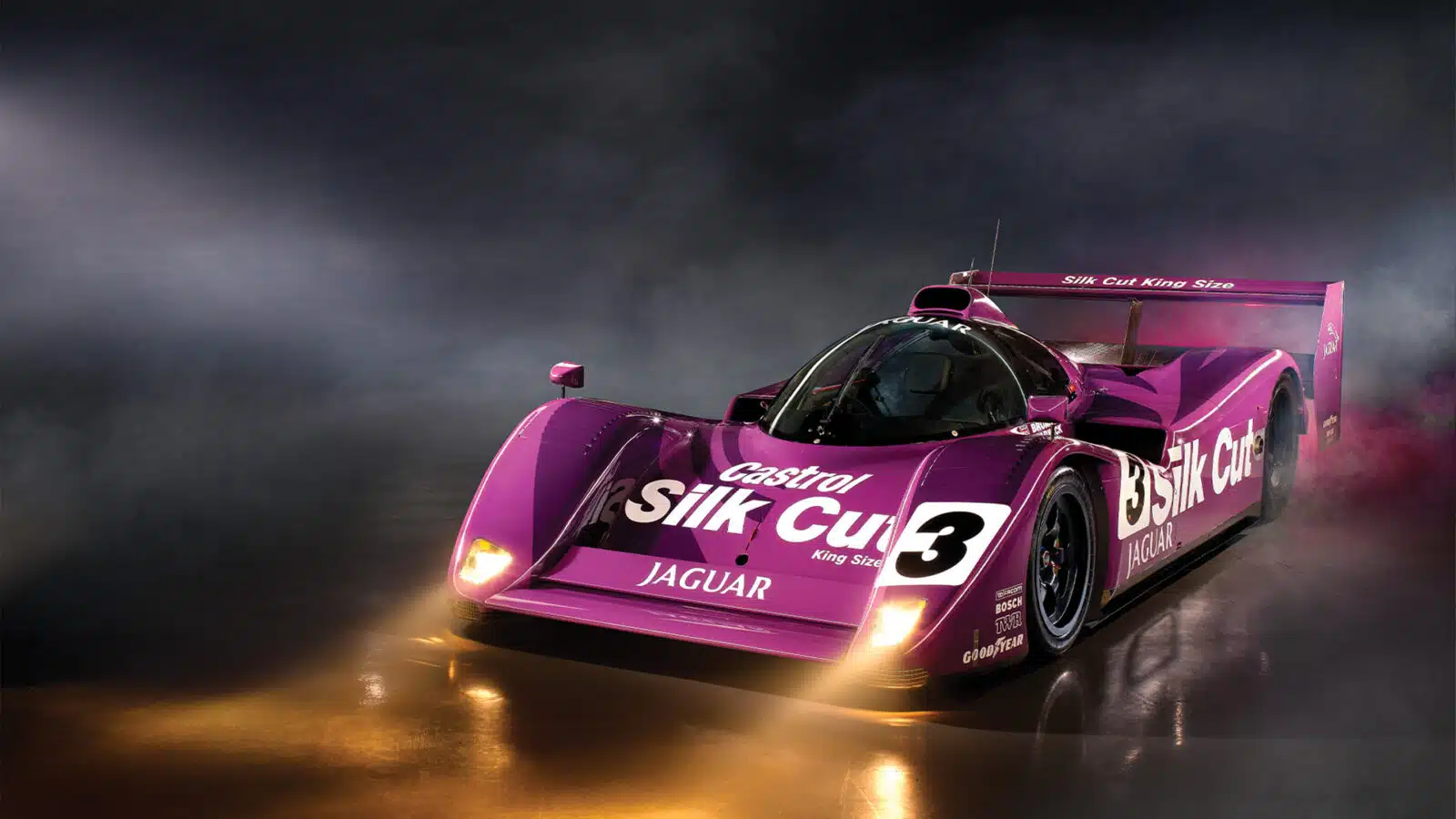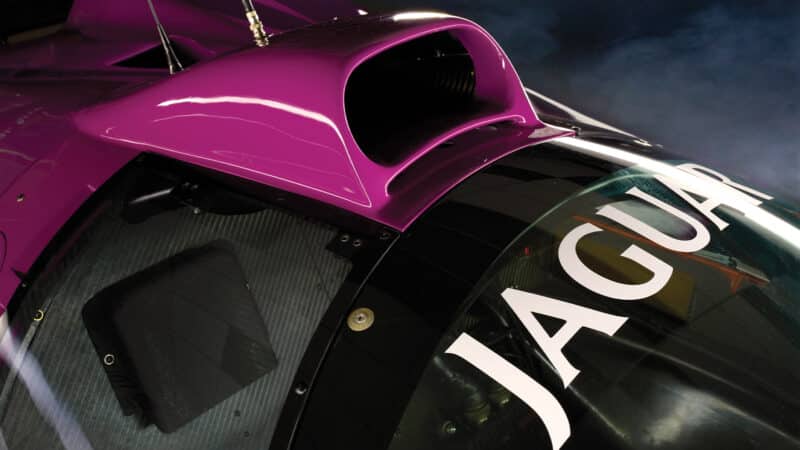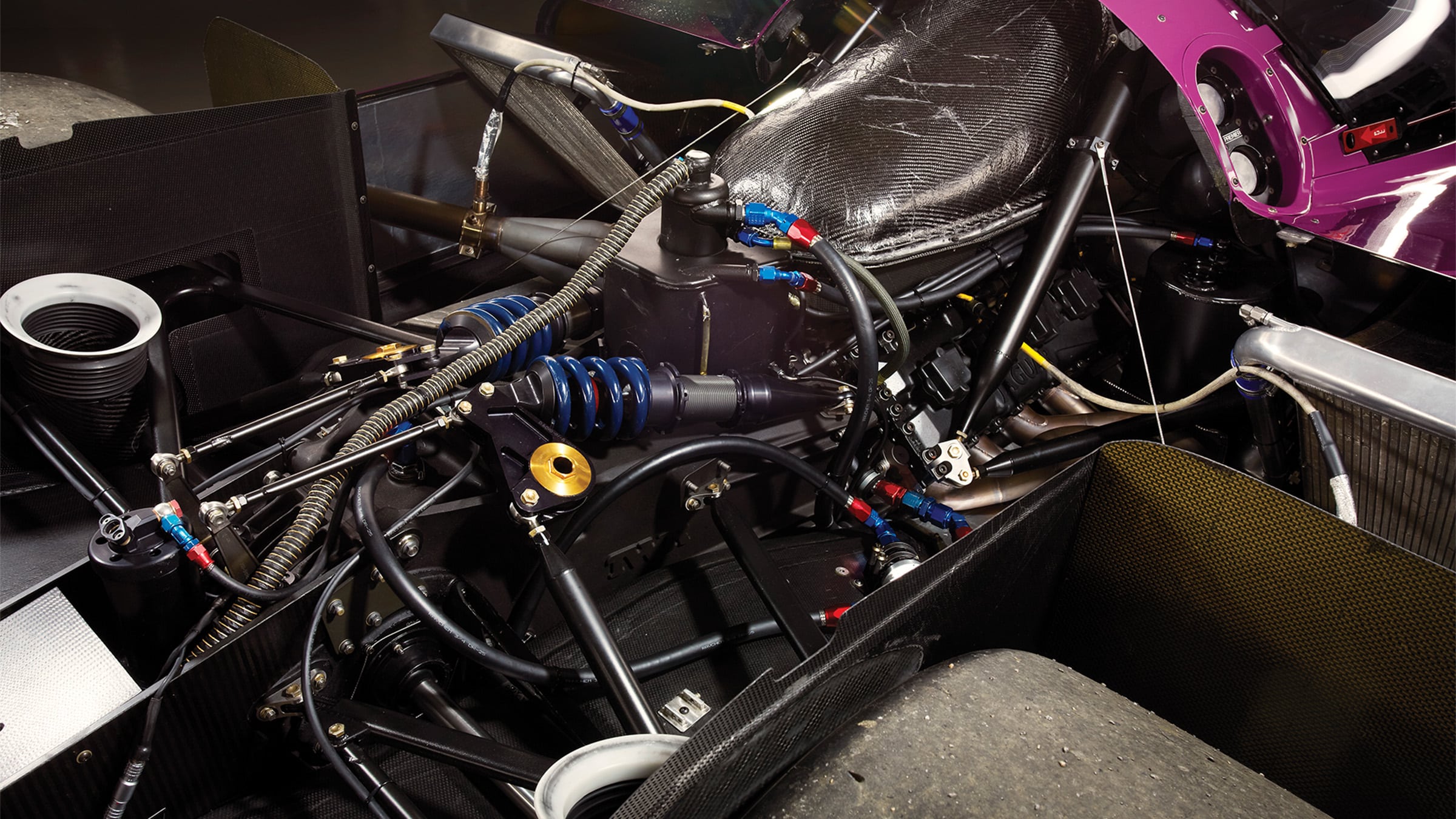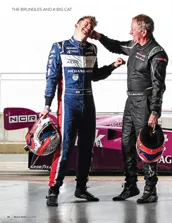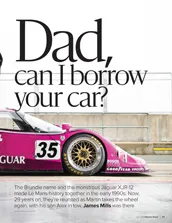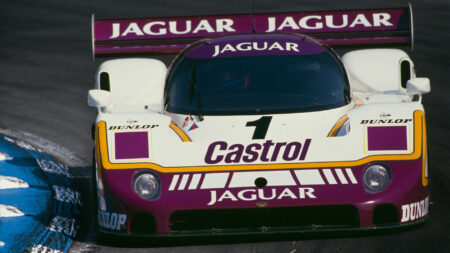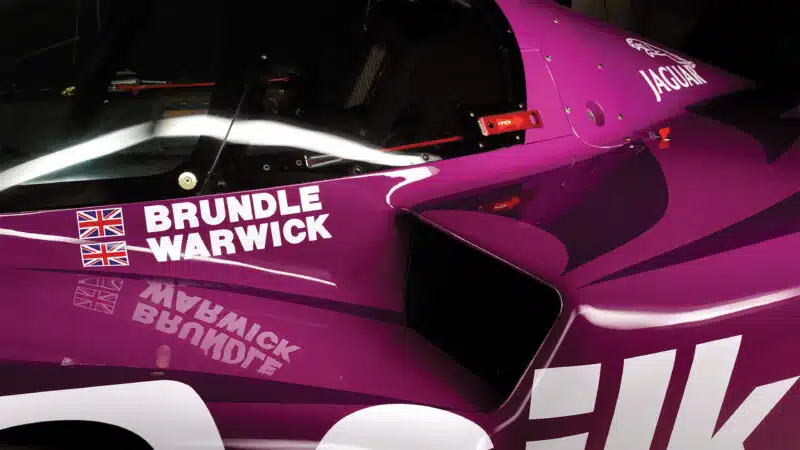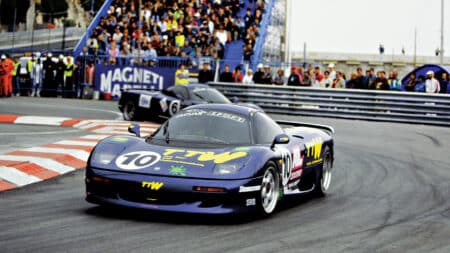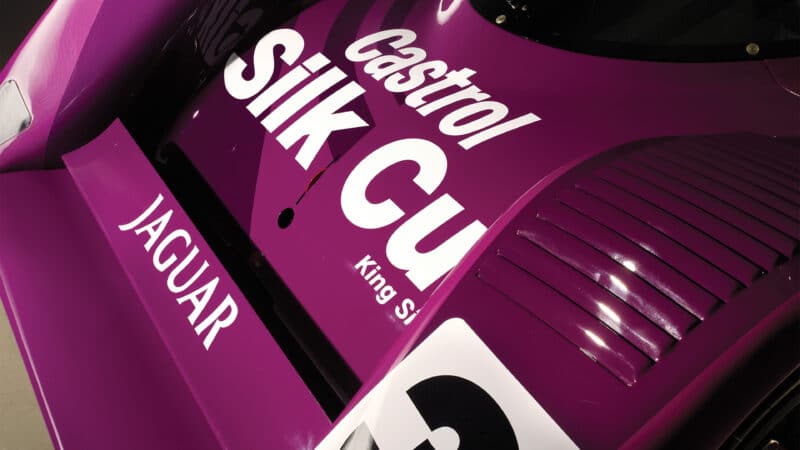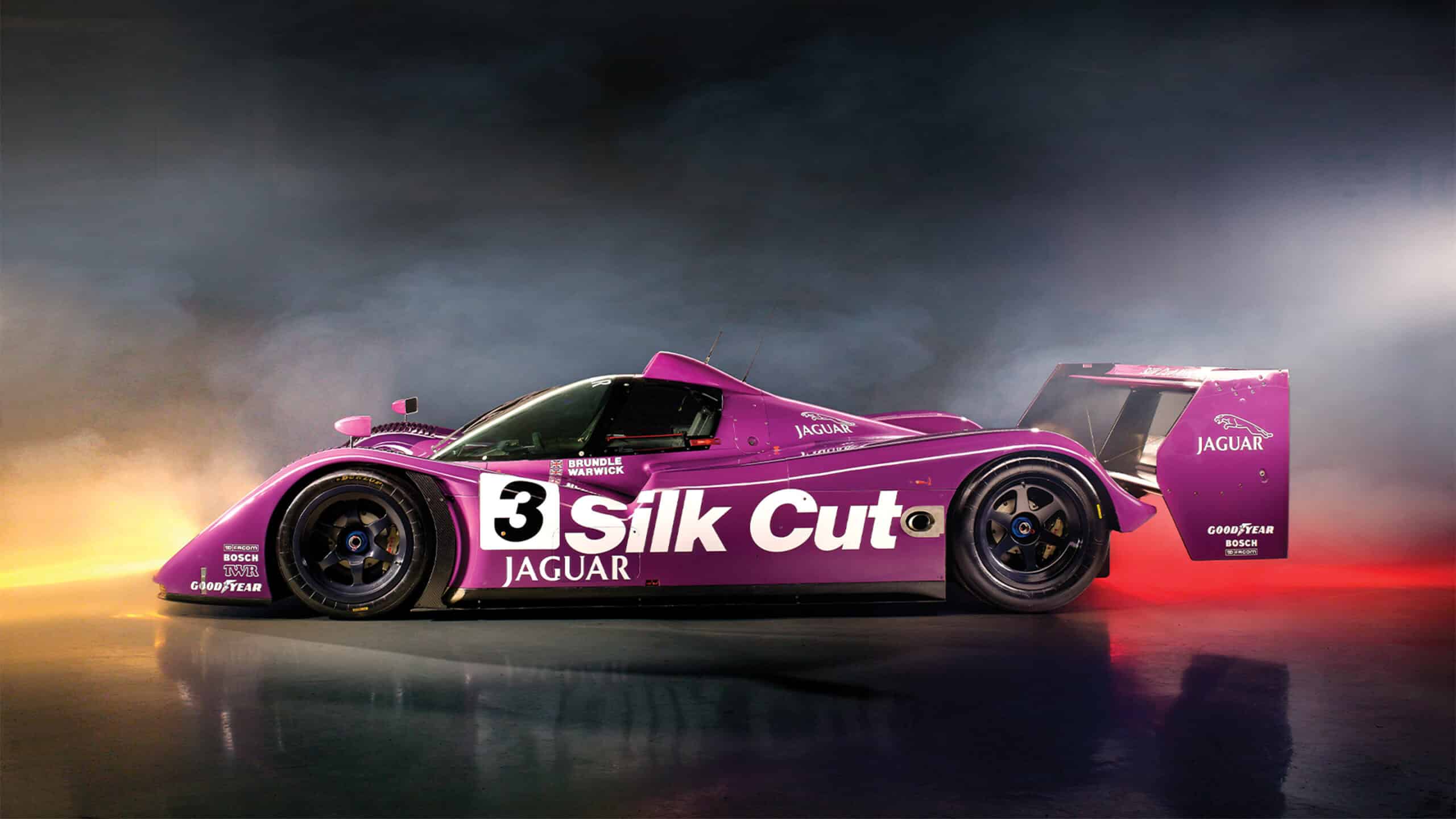Group C sports cars of the day had doors. The XJR-14 had windows that popped out — a mechanic was assigned to play catch at pitstops. It was central to the concept of creating what chief designer John Piper calls “a fat F1 car”.
“There was a regulation stipulating the size of the [side] window and the size of the door,” he explains. “We made them the same thing. That meant you didn’t require a dogleg in the tub, which meant you could have a narrow, high-sided and very stiff monocoque.”
The narrow chassis allowed the TWR technical team to move the radiators out of the nose and into the sidepods, freeing up the nose for aerodynamic gain. Here again, TWR came up with a novel interpretation of the rules to get sufficient airflow behind the front wing that distinguished the XJR-14 from its forebears.
Brawn again: “We checked the crash-test regulations and it stated that there could be no damage to the survival cell beyond the pedal line. That meant there was a large chunk of the chassis that you could damage and that allowed us to achieve the short nosebox.”
The XJR-14 chassis, produced by TWR’s in-house ASTEC composites company, didn’t quite make it through the test as planned. The damage to the monocoque was more extensive than envisaged, which meant the pedals had to be moved backwards.
That wing was crucial – though never entirely successful — in trying to balance out the massive amounts of downforce generated from the underside of the car courtesy of another bit of clever rulebook interpretation.
Piper: “The rules stated that you could have a two-element rear wing, but there was no regulation on the distance between them. So we put the second plane down level with the diffuser, which effectively gave us a massive extension.”
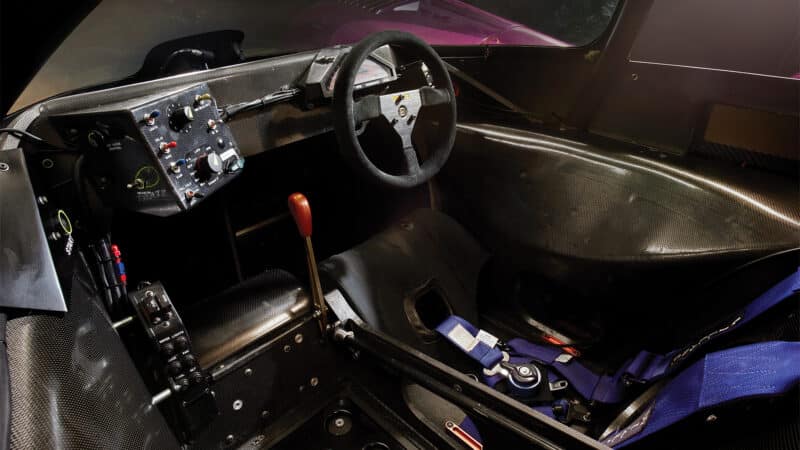
Drivers struggled to get used to left-handed gear stick
That explains downforce numbers that were, according to Brawn, “an order of magnitude more than were being achieved in F1 at the time”. He can’t recall the figures, but points out that the Jag was capable of lap times that would have qualified it on the back of an F1 grid. “You could work it out,” he says. “We were nearly 250 kilos heavier than an F1 car, and today that weight would equate to 10 seconds.”
*
The clever design solutions on the XJR-14 didn’t stop with the structure and the aero. Piper came up with a bespoke longitudinal transmission with the gears ahead of the rearaxle centre line. That brought the weight forward without the aerodynamic penalty of a transverse ‘box.
“It was not easy to comprehend the limits of the car” Teo Fabi
Piper also came up with a novel gear linkage. That’s something else the drivers still talk about today, though not in the same hushed tones as the car’s handling. The selector mechanism was taken off the top of the gearbox and through the vee of the engine and the fuel tank. The result was a left-hand gear change that wasn’t popular with the drivers.
“Using a left-hand gearstick ran contrary to everything I’d done through my career,” says Warwick. “None of us ever got used to it.”
Warwick, though, didn’t take much getting used to the XJR-14. Straight out of F1, he had no problems adapting. His full-season team-mate Teo Fabi, by his own admission, struggled.
“It was not easy to understand that car, to comprehend the limits of the car,” says the Italian. “It required commitment and I was coming from a not very successful season in CART, where the cars had less downforce and reacted more slowly.”
Fabi had come into the Jaguar fold after finding himself without a CART ride in the US in the wake of Porsche’s withdrawal. He contacted TWR operations director Roger Silman, with whom he had worked at March in his Formula 2 days.
